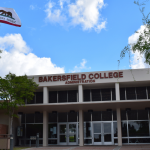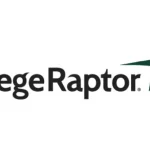Scaling personalized student engagement is a key component in a higher education institution’s digital transformation. Without it, interactions between students and schools become impersonal and ineffective, and support staff continue to be overburdened and under-appreciated.
Indeed, in order for colleges to meet their enrollment and retention goals, they need to find ways to scale personalized engagement with students throughout the educational journey: from prospect to student, through academic programs, and on to completion or graduation. Touch points along the way are critical.
When engagement is personalized, the success of each interaction is magnified. And when the engagement is mutual, the institution has a better indication of what the student intends, the student’s attitudes toward the institution, and insight into whether the student is succeeding or not.
For personalized student engagement to be a two-way street, institutions need to find scalable ways to engage students and students need simple, modern ways to engage with schools. Technology is a key part of the equation.
Thinking through how to make personalized student engagement happen yields four key ingredients:
Two-Way Student Outreach
Proactive outreach to prospective or current students using various channels (email, text, phone, social) are a great way to engage students. The opportunities are endless: “nudging” them along paths to various desired outcomes, completing applications, submitting deposits, or moving through the gauntlet of tasks the summer before starting school are popular use cases. And conversely, students can respond to the nudge with a direct response or an action. The proactive approach ensures that your institution is staying on “offense” to engage with students.
24/7 Student Support
Providing these same students with tools to get their questions answered 24/7 from any device is a valuable way to invest in communication that scales. Students have questions, whether it is a prospective student with admissions-related questions or current students trying to resolve registrar, bursar, or financial aid issues, students face hurdles. Tools such as AI chatbots and online videos provide immediate answers, reduce wait times and frustrations for students, and reduce burdens on staff.
Resources that Educate
We are all familiar with resources such as FAQs and handbooks. These resources are helpful, but they are the bare-minimum. To enhance communication, and ultimately drive engagement, there is significant value in providing clear, easy-to-digest, resources in every communication. Do not overwhelm students. Rather, take care to provide supplemental resources – especially short online video content to connect with visual learners – so students can quickly grasp topics that are more challenging for them.
Data to Analyze
Take time to understand behavior through measuring student engagement data. And be thoughtful and judicious when doing so. Find out which students are reaching (and more importantly which students are NOT reaching) enrollment and retention milestones. Identifying these cohorts early is critical to deploying subsequent engagement tactics to help extend resources that may help a student address challenges they are facing.
The Key Takeaways
Higher education was under financial and fiscal pressures before the pandemic. There is even greater pressure now to “do more with less.” As a result, post-pandemic success requires new thinking around student engagement. Many institutions recognize this. Coming out of the pandemic, 60% of institutions recently reported that their business models will permanently change in the wake of COVID-19. Nearly 50% have indicated that “operating models” will permanently change.
As part of this change, there is urgency to embrace digital transformation and scale personalized engagement. When that engagement becomes a two-way conversation, there is tremendous opportunity – so long as the staff can adequately support it. Technologies such as chatbots, text “campaigns” and online videos are some of the tools that can assist staff and make “scaling” possible.
Digital transformation that leverages these technologies to provide Outreach, Support, Education, and Analysis is one way to stay close to students in a personalized way. These technologies are critical to extending the reach of support staff. This way of thinking keeps the processes “sustainable”, an important aspect to ensure that digital transformation can succeed for the long-term.
For more information on the 4 ingredients to student engagement, download our infographic.















